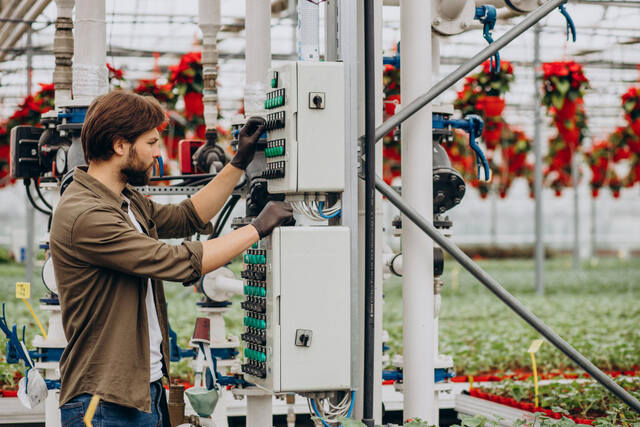In our ever-evolving technological landscape, the future of power management is shaped by innovative solutions prioritizing efficiency, sustainability, and safety. PowerBoxes and FireBoxes, pivotal components in this realm, are experiencing remarkable advancements.
A PowerBox is a centralized device designed to distribute efficiently within a facility. Serving as a pivotal component in electrical systems, it optimizes the management of electrical connections, ensuring a reliable and controlled power supply to various devices and systems. With customizable features and scalability, PowerBoxes are adaptable to diverse applications, making them suitable for residential and industrial settings.
A FireBox is a critical component in fire safety systems, dedicated to detecting and responding to potential fire hazards. Equipped with advanced technologies such as smoke detectors and thermal imaging, a FireBox serves as an early warning system, allowing for swift and effective measures to be taken in the event of a fire. Integrated seamlessly with building management systems, FireBoxes contribute to a coordinated and proactive approach to fire safety in residential and commercial environments.
Let’s explore the exciting trends and developments shaping these critical systems’ future:
Powering Ahead: Trends in PowerBoxes
1. Smart Grid Integration:
PowerBoxes are evolving to integrate seamlessly with smart grid technologies. This allows for more intelligent and responsive energy distribution, optimizing the balance between supply and demand. The result is a more resilient and adaptive power infrastructure.
2. Energy Storage Integration:
The future of PowerBoxes includes enhanced integration with energy storage solutions, such as advanced batteries. This enables the storage of excess energy during periods of low demand, promoting efficient use and providing backup power during outages.
3. Edge Computing for Energy Management:
Edge computing, bringing computational capabilities closer to the data source, influences PowerBox designs. This trend allows for faster decision-making in power management, optimizing energy consumption at the source and reducing reliance on centralized systems.
4. Enhanced Monitoring and Analytics:
PowerBoxes are becoming more equipped with sophisticated monitoring tools and analytics capabilities. Real-time data on energy usage, system performance, and predictive analytics help identify potential issues before they become critical, improving overall system reliability.
5. Blockchain for Energy Transactions:
Blockchain technology is making its way into power management. PowerBoxes are designed to facilitate transparent and secure energy transactions, enabling peer-to-peer energy trading and fostering a decentralized energy ecosystem.
Igniting Innovation: Developments in FireBoxes
1. Artificial Intelligence in Fire Detection:
The future of FireBoxes involves integrating artificial intelligence (AI) algorithms for more accurate and rapid fire detection. AI can analyze patterns, differentiate between false alarms and real threats, and enhance the overall effectiveness of fire safety systems.
2. Robotics for Fire Suppression:
Innovations in a FireBox include the use of robotics for advanced fire suppression. Drones and robotic systems equipped with firefighting capabilities can enter hazardous areas, providing a more efficient and safer method of dealing with fires.
3. Machine Learning for Predictive Fire Modeling:
Machine learning algorithms are being employed in FireBoxes to create predictive models for fire behavior. These systems can anticipate how a fire might spread by analyzing historical data, enabling proactive measures, and optimizing evacuation strategies.
4. IoT Integration for Occupant Safety:
The Internet of Things (IoT) is crucial in developingFireBoxes. Integration with IoT devices enhances occupant safety by enabling automated alerts, evacuations, and communication systems that respond dynamically to fire emergencies.
5. Advanced Materials for Fire Resistance:
Materials science is contributing to the development of FireBoxes with enhanced fire-resistant components. From flame-retardant materials to heat-resistant coatings, these innovations increase the durability and reliability of fire safety systems.
What to Look for in PowerBoxes:
- Capacity and Load Management: Evaluate the PowerBox’s capacity to ensure it can handle the electrical load of your facility. Consider scalability options to accommodate potential future expansions or increased energy demands.
- Customization Features: Look for PowerBoxes with customizable configurations to meet the specific needs of your electrical system. Consider features such as adjustable voltage settings, circuit configurations, and compatibility with various devices.
- Smart Technologies: Check for integration with smart technologies for real-time monitoring and control of energy consumption. Smart PowerBoxes may offer energy analytics, remote access, and automation capabilities.
- Compatibility with Renewable Energy: If sustainability is a priority, choose a PowerBox that seamlessly integrates with renewable energy sources such as solar or wind power.Ensure compatibility with inverters and other components of your renewable energy system.
- Reliability and Safety Features: Prioritize PowerBoxes with built-in safety features, such as surge protection, overload protection, and short-circuit prevention.Look for devices with a reliable backup power system to ensure uninterrupted operation during power outages.
- Ease of Maintenance: Opt for PowerBoxes with easily accessible components for maintenance purposes. Consider devices with monitoring capabilities that provide alerts for potential issues, facilitating proactive maintenance.
What to Look for in FireBoxes:
- Early Detection Technology: Prioritize FireBoxes with advanced detection technologies such as smoke detectors, heat sensors, and, if available, AI-driven algorithms for early and accurate fire detection. Look for systems that can distinguish between false alarms and actual fire threats.
- Suppression Systems: Evaluate the effectiveness of the fire suppression systems integrated into the FireBox, whether it includes sprinklers, gas-based suppression, or other methods. Check for compliance with safety standards and regulations for fire suppression equipment.
- Integration with Building Systems: Choose FireBoxes that seamlessly integrate with building management systems for a coordinated response to fire emergencies. Ensure compatibility with other safety measures, such as emergency lighting, door access controls, and HVAC shutdown systems.
- Remote Monitoring and Control: Look for FireBoxes with remote monitoring capabilities, allowing real-time system status observation. Remote control features can enable quick alarm responses and facilitate system adjustments without physical access.
- IoT Connectivity: Consider FireBoxes that offer Internet of Things (IoT) connectivity for improved communication and data sharing between devices. IoT integration can enhance overall responsiveness and facilitate more advanced fire safety strategies.
- Compliance and Certification: Ensure that the FireBox meets industry standards and regulations for fire safety equipment. Look for certifications from relevant authorities to validate the system’s reliability and adherence to safety protocols.
By carefully considering these factors for both PowerBoxes and FireBoxes, you can make informed decisions that align with your facility’s specific requirements and priorities, whether it’s optimizing power distribution or enhancing fire safety measures.
In summary, as we look to the future, the synergy between PowerBoxes and FireBoxes holds the promise of creating safer, smarter, and more sustainable environments. The integration of cutting-edge technologies ensures that these systems not only meet current needs but also anticipate and adapt to the challenges of tomorrow. Whether optimizing energy distribution or enhancing fire safety measures, the trends and developments in PowerBoxes and FireBoxes are shaping a future where efficiency and safety go hand in hand. Embracing these innovations ensures that our power management systems remain resilient, responsive, and ready for the demands of the ever-evolving world.

